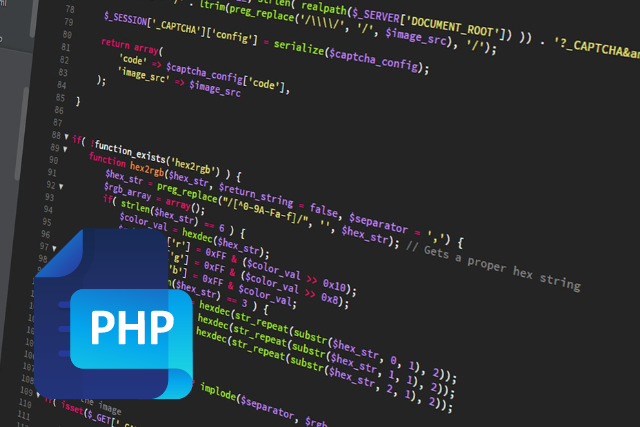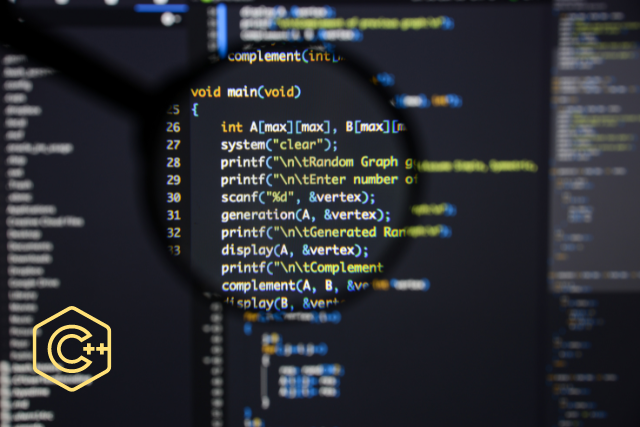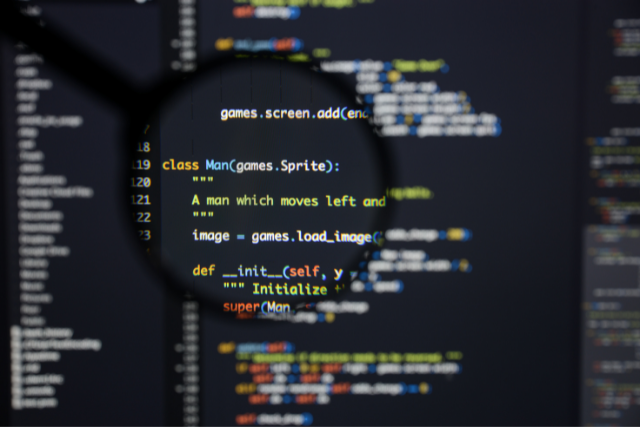As the backbone of many web applications, PHP developers play a crucial role in building and maintaining dynamic websites and applications. To ensure you hire the best talent, it’s essential to ask the right questions during the interview process.
Here, we’ve compiled a list of 40 targeted interview questions to help you evaluate the technical proficiency, problem-solving abilities, and overall expertise of PHP developer candidates.
Importance of PHP in Web Development
PHP, or Hypertext Preprocessor, is a popular server-side scripting language designed specifically for web development. It is widely used because it is open-source, platform-independent, and has a large community of developers constantly contributing to its improvement. PHP integrates seamlessly with HTML and various databases, making it a versatile choice for web developers.
PHP’s strength lies in its simplicity and ease of learning, which allows developers to quickly build dynamic web applications. It is highly efficient in terms of execution speed, and its extensive library support enables developers to implement complex functionalities with minimal code. Moreover, PHP’s robust security features help protect web applications from common threats such as SQL injection and cross-site scripting (XSS) attacks.
The language’s flexibility allows it to be used in a wide range of applications, from simple websites to large-scale enterprise systems. Popular content management systems (CMS) like WordPress, Joomla, and Drupal are built on PHP, showcasing its capability to handle various web development needs. Additionally, PHP frameworks such as Laravel, Symfony, and CodeIgniter provide structured ways to develop web applications, promoting best practices and reducing development time.
Given the crucial role PHP plays in web development, hiring proficient PHP developers is essential for businesses aiming to create efficient, secure, and scalable web applications.
40 Most Common Interview Questions
1. What is PHP and what are its main uses?
Answer: PHP (Hypertext Preprocessor) is a server-side scripting language primarily used for web development. It is used to create dynamic content that interacts with databases. PHP is widely utilized for developing web applications, creating APIs, and building content management systems.
2. Explain the difference between echo and print in PHP.
Answer: echo and print are both used to output data to the screen in PHP. The main difference is that echo can take multiple parameters and does not return a value, while print can only take one argument and returns a value of 1, making it slightly slower.
3. How do you connect to a MySQL database using PHP?
Answer: You can connect to a MySQL database using the mysqli_connect function or the PDO (PHP Data Objects) extension. Here is an example using mysqli_connect:
$servername = "localhost";
$username = "username";
$password = "password";
$dbname = "database";
$conn = mysqli_connect($servername, $username, $password, $dbname);
if (!$conn) {
die("Connection failed: " . mysqli_connect_error());
}
echo "Connected successfully";
4. What are PHP sessions and how do you use them?
Answer: PHP sessions are a way to store data across multiple pages for a single user. You can start a session using session_start() and set session variables using the $_SESSION superglobal array. Here is an example:
session_start();
$_SESSION["username"] = "JohnDoe";
echo "Session variable is set.";
5. What are the differences between GET and POST methods in PHP?
Answer: GET and POST are two HTTP request methods used to send data to the server. GET appends data to the URL, has length limitations, and is less secure because the data is visible in the URL. POST sends data in the request body, has no size limitations, and is more secure as data is not visible in the URL.
6. How can you handle errors in PHP?
Answer: Errors in PHP can be handled using try-catch blocks, custom error handlers, or by configuring PHP error reporting settings. Here is an example using a try-catch block:
try {
// Code that may throw an exception
} catch (Exception $e) {
echo 'Caught exception: ', $e->getMessage(), "\n";
}
7. What is the use of isset() in PHP?
Answer: isset() is a function used to check if a variable is set and is not NULL. It returns true if the variable exists and has a non-null value, and false otherwise.
8. How do you define a constant in PHP?
Answer: You can define a constant in PHP using the define() function. For example:
define("SITE_NAME", "MyWebsite");
echo SITE_NAME;
9. Explain the concept of namespaces in PHP.
Answer: Namespaces in PHP are used to encapsulate items such as classes, functions, and constants to avoid naming conflicts. They allow for better organization and modularization of code. Here is an example:
namespace MyNamespace;
class MyClass {
public function myMethod() {
echo "Hello, World!";
}
}
$obj = new MyNamespace\MyClass();
$obj->myMethod();
10. What is the difference between require and include?
Answer: Both require and include are used to include and evaluate files in PHP. The main difference is that require will produce a fatal error and stop the script if the file cannot be found, whereas include will only produce a warning and the script will continue to execute.
11. How do you create an array in PHP?
Answer: You can create an array in PHP using the array() function or the shorthand [] syntax. Here is an example:
$fruits = array("Apple", "Banana", "Orange");
$vegetables = ["Carrot", "Broccoli", "Spinach"];
12. What is a PHP trait and how is it used?
Answer: A PHP trait is a mechanism for code reuse in single inheritance languages like PHP. Traits allow you to create methods that can be used in multiple classes. Here is an example:
trait HelloWorld {
public function sayHello() {
echo "Hello, World!";
}
}
class MyClass {
use HelloWorld;
}
$obj = new MyClass();
$obj->sayHello();
13. How do you create a cookie in PHP?
Answer: You can create a cookie in PHP using the setcookie() function. Here is an example:
setcookie("user", "John Doe", time() + (86400 * 30), "/");
14. What is the purpose of the final keyword in PHP?
Answer: The final keyword in PHP is used to prevent class inheritance or method overriding. A final class cannot be extended, and child classes cannot override a final method.
15. How do you perform form validation in PHP?
Answer: Form validation in PHP can be performed using various techniques such as checking for empty fields, validating data types, and using regular expressions. Here is an example:
if ($_SERVER["REQUEST_METHOD"] == "POST") {
$name = $_POST["name"];
if (empty($name)) {
echo "Name is required.";
} else {
echo "Name: " . htmlspecialchars($name);
}
}
16. What is PDO in PHP?
Answer: PDO (PHP Data Objects) is a database access layer providing a uniform method of access to multiple databases. It supports prepared statements and transactions, offering a secure way to handle database operations. Here is an example:
try {
$pdo = new PDO("mysql:host=localhost;dbname=mydatabase", "username", "password");
$pdo->setAttribute(PDO::ATTR_ERRMODE, PDO::ERRMODE_EXCEPTION);
echo "Connected successfully";
} catch (PDOException $e) {
echo "Connection failed: " . $e->getMessage();
}
17. What is the use of explode() in PHP?
Answer: explode() is a function used to split a string into an array based on a delimiter. Here is an example:
$string = "Apple,Banana,Orange";
$array = explode(",", $string);
print_r($array);
18. Explain the foreach loop in PHP.
Answer: The foreach loop in PHP is used to iterate over arrays. It provides an easy way to loop through array elements. Here is an example:
$fruits = ["Apple", "Banana", "Orange"];
foreach ($fruits as $fruit) {
echo $fruit . "\n";
}
19. What is a PHP filter and how do you use it?
Answer: PHP filters are used to validate and sanitize external input. The filter_var() function is commonly used to apply these filters. Here is an example:
$email = "john.doe@example.com";
if (filter_var($email, FILTER_VALIDATE_EMAIL)) {
echo "Email is valid.";
} else {
echo "Invalid email.";
}
20. How do you create a class in PHP?
Answer: You can create a class in PHP using the class keyword. Here is an example:
class Car {
public $color;
public $model;
public function __construct($color, $model) {
$this->color = $color;
$this->model = $model;
}
public function message() {
return "My car is a " . $this->color . " " . $this->model . ".";
}
}
$myCar = new Car("red", "Toyota");
echo $myCar->message();
21. What is the difference between public, private, and protected in PHP?
Answer: public, private, and protected are access modifiers in PHP that control the visibility of class properties and methods. public means the property/method can be accessed from anywhere, private means it can only be accessed within the class, and protected means it can be accessed within the class and by derived classes.
22. How do you handle file uploads in PHP?
Answer: File uploads in PHP are handled using the $_FILES superglobal array. Here is an example:
if ($_SERVER["REQUEST_METHOD"] == "POST") {
$target_dir = "uploads/";
$target_file = $target_dir . basename($_FILES["fileToUpload"]["name"]);
if (move_uploaded_file($_FILES["fileToUpload"]["tmp_name"], $target_file)) {
echo "The file ". htmlspecialchars(basename($_FILES["fileToUpload"]["name"])). " has been uploaded.";
} else {
echo "Sorry, there was an error uploading your file.";
}
}
23. What is Composer in PHP?
Answer: Composer is a dependency management tool for PHP. It allows you to manage libraries and packages that your project depends on, ensuring that you have the right versions of each dependency. You can define your dependencies in a composer.json file and run composer install to install them.
24. How do you create and use interfaces in PHP?
Answer: Interfaces in PHP are used to define the structure of a class without implementing it. A class that implements an interface must implement all its methods. Here is an example:
interface Animal {
public function makeSound();
}
class Dog implements Animal {
public function makeSound() {
echo "Woof!";
}
}
$dog = new Dog();
$dog->makeSound();
25. What is the purpose of abstract classes in PHP?
Answer: Abstract classes in PHP are classes that cannot be instantiated on their own and are meant to be extended by other classes. They can contain abstract methods that must be implemented by subclasses. Here is an example:
abstract class Animal {
abstract public function makeSound();
}
class Dog extends Animal {
public function makeSound() {
echo "Woof!";
}
}
$dog = new Dog();
$dog->makeSound();
26. How do you implement inheritance in PHP?
Answer: Inheritance in PHP is implemented using the extends keyword. A class can inherit properties and methods from another class. Here is an example:
class Animal {
public $name;
public function __construct($name) {
$this->name = $name;
}
public function speak() {
echo "The animal makes a sound.";
}
}
class Dog extends Animal {
public function speak() {
echo $this->name . " says woof!";
}
}
$dog = new Dog("Buddy");
$dog->speak();
27. What are PHP magic methods? Give an example.
Answer: PHP magic methods are special methods that start with double underscores (__) and are used to perform specific tasks. Examples include __construct, __destruct, __get, __set, __call, etc. Here is an example of the __construct method:
class MyClass {
public function __construct() {
echo "The class has been instantiated.";
}
}
$obj = new MyClass();
28. How do you implement error logging in PHP?
Answer: Error logging in PHP can be implemented using the error_log() function or by configuring the log_errors directive in the php.ini file. Here is an example using error_log():
error_log("An error occurred.", 3, "/var/log/php-errors.log");
29. Explain the use of the header() function in PHP.
Answer: The header() function in PHP is used to send raw HTTP headers to the client before any output is sent. It is commonly used for redirection, setting content types, and controlling cache behavior. Here is an example for redirection:
header("Location: http://www.example.com/");
exit();
30. What is the difference between mysql_* functions and mysqli_* functions?
Answer: mysql_* functions are deprecated and should not be used. mysqli_* functions (MySQL Improved) provide a more secure and feature-rich way to interact with MySQL databases, supporting prepared statements, transactions, and multiple statements.
31. How do you prevent SQL injection in PHP?
Answer: SQL injection can be prevented by using prepared statements and parameterized queries with PDO or mysqli. Here is an example using PDO:
$stmt = $pdo->prepare("SELECT * FROM users WHERE email = :email");
$stmt->execute(['email' => $email]);
$user = $stmt->fetch();
32. What is the purpose of the htaccess file in PHP?
Answer: The .htaccess file is a configuration file used by Apache web servers to control server behavior. It can be used to manage URL redirects, restrict access to certain directories, enable gzip compression, and set custom error pages.
33. How do you use the json_encode() and json_decode() functions in PHP?
Answer: json_encode() is used to convert a PHP array or object into a JSON string, and json_decode() is used to convert a JSON string into a PHP array or object. Here is an example:
$data = ["name" => "John", "age" => 30];
$json = json_encode($data);
echo $json;
$decoded = json_decode($json, true);
print_r($decoded);
34. Explain the use of file_get_contents() in PHP.
Answer: file_get_contents() is a function used to read the contents of a file into a string. It can also be used to read data from a URL. Here is an example:
$contents = file_get_contents("example.txt");
echo $contents;
$jsonData = file_get_contents("http://www.example.com/data.json");
$data = json_decode($jsonData, true);
print_r($data);
35. How do you send an email in PHP?
Answer: You can send an email in PHP using the mail() function or third-party libraries like PHPMailer. Here is an example using the mail() function:
$to = "recipient@example.com";
$subject = "Test Email";
$message = "This is a test email.";
$headers = "From: sender@example.com";
if (mail($to, $subject, $message, $headers)) {
echo "Email sent successfully.";
} else {
echo "Failed to send email.";
}
36. What are PHP annotations?
Answer: Annotations in PHP are metadata added to classes, methods, or properties, typically used by frameworks to provide additional information or configuration. While PHP does not have native support for annotations, libraries like Doctrine provide annotation parsing capabilities.
37. How do you handle JSON data in PHP?
Answer: JSON data can be handled in PHP using json_encode() to convert PHP arrays/objects to JSON strings and json_decode() to parse JSON strings into PHP arrays/objects. Here is an example:
$data = ["name" => "John", "age" => 30];
$json = json_encode($data);
echo $json;
$decoded = json_decode($json, true);
print_r($decoded);
38. Explain the use of session_start() and session variables in PHP.
Answer: session_start() is used to start a new session or resume an existing one. Session variables are stored in the $_SESSION superglobal array and can be used to store user-specific data across multiple pages. Here is an example:
session_start();
$_SESSION["username"] = "JohnDoe";
echo "Session variable is set.";
39. How do you use the cURL library in PHP?
Answer: The cURL library in PHP is used to make HTTP requests to other servers. Here is an example:
$ch = curl_init();
curl_setopt($ch, CURLOPT_URL, "http://www.example.com/");
curl_setopt($ch, CURLOPT_RETURNTRANSFER, true);
$response = curl_exec($ch);
curl_close($ch);
echo $response;
40. What is the purpose of ob_start() and ob_end_flush() in PHP?
Answer: ob_start() starts output buffering, which means that the output is stored in a buffer instead of being sent to the browser immediately. ob_end_flush() sends the buffer contents to the browser and turns off output buffering. These functions are useful for controlling the timing of output or modifying the output before it is sent to the browser.
Conclusion
PHP continues to be a dominant force in web development due to its versatility, ease of use, and extensive community support. Hiring a skilled PHP developer requires understanding their proficiency in key areas such as database interactions, error handling, and object-oriented programming. By asking the right questions, you can identify candidates who possess the technical skills and problem-solving abilities necessary to contribute effectively to your development team. Use these 40 questions to guide your interviews and ensure you select the best PHP developers for your projects.







